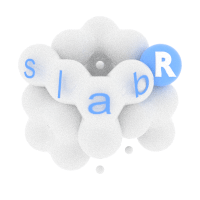slabR is an R package for creating summary slabs from arrays according to a summary scheme slab(array, scheme). This is useful for ecosystem models which use a single value to represent volumes within a 3D grid. The different summaries are implemented in C++ using Rcpp for speed.
Motivation
slabR was built to summarise 3D ocean model output. Often the volumes of interest remain constant, but different arrays exist for time steps and variables.
If you want to summarise the same area for multiple layers of an array the
exactextractrpackage is a fantastic tool. However, with increasing depth the sea floor starts to encroach on the area, meaning fewer pixels are water. This also requires the projection of your data to be interpretable by therasterpackage, and a secondary step is neccessary to summarise across layers.You could summarise across all depths before averaging spatially with optimised functions like
colmeans, but this wastes time handling points outside of your target volume which need to be removed later.Indexing the array directly from R to only handle useful values can be slow when working with many files over large (global) volumes.
slabR performs common summary operations on an array by indexing and group membership. We refer to the combination of indices and groupings as a summary scheme when represented as a dataframe. By using a summary scheme, multiple volumes can be summarised from an array, only visiting the pixels of interest, and without leaving the Rcpp loop. slabR plays nicely with pipes, using the array to be processed as the first argument. This allows a constant summary scheme to by applied with purrr::map(list(arrays), slab, scheme).
Installation
The development version can be downloaded from GitHub with:
remotes::install_github("Jack-H-Laverick/slabR")
Project Documentation
Head to GitHub.io to view the full documentation.
The navbar contains links to an index of documented functions and a change log.


